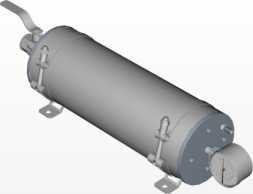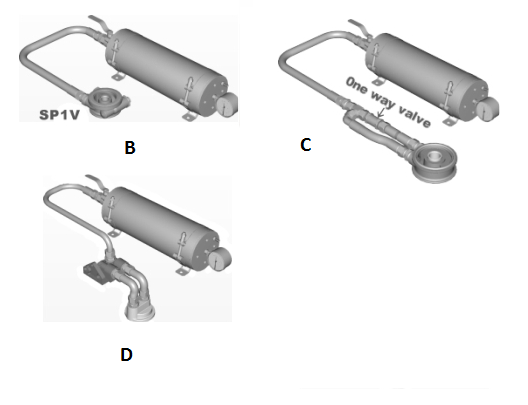- Oil Coolers
- Oil Cooler Components
- Filter Components
- Hoses, Pipes & Fittings
- Hose Accessories
- Threaded Adapters, Plugs and Caps
- Fuel Sampling
- Quick Connect and Checkvalves
- Insulation & Overbraid
- Filler Caps
- Refuel, Jacking Systems and Quick Release Steering Boss
- Pumps, Fans, Heaters and Accumulators
- Instruments, Gauges
- Tanks and Pots
- Accessories
Technical Pages
Accumulators
 Application1) To provide oil to the engine when the oil pump is unable to pick up oil from the sump due to conditions of surge during acceleration, braking or cornering. 2) To provide pre-lubrication to the engine when starting before the oil pump has built up pressure. Cold starts account for 80% of engine wear.3) To iron out shock waves in the oil pressure system, caused by rapid rpm increase on a cold engine, sticky oil pressure relief valves, etc. Shock waves can damage oil filters, coolers, oil lines and oil pump drives.4) To provide more engine power by lowering the level of oil in the sump thereby reducing crankshaft windage, the correct levels can only be achieved by experimentation and is best left to experts. |
ConstructionThis device consists of a piston in a cylinder with air in the chamber behind the piston pre-pressurised to a minimum of 6psi. Engine oil pressure further compresses the air providing the means to store oil at normal engine operating pressure.The main body is built from 4.1/4"(6 & 4 pint), 3.25"(2 pint) x 1/8" wall aluminium tubing, roller burnished and hard Teflon coated. End caps and pistons are aluminium and O-ringed . Has 0-160 psi gauge, a Schraeder valve for air pre-charge and either manual or electric control valves.Choice of sizes. Because the maximum oil flow through an engine varies from 2 gallons (9 litres or 16 pints) per minute to 12 gallons (54.5 litres or 96 pints) per minute, then a 6 pint accumulator could give from 2.2 to 4 seconds protection, usually much longer at lower rpm. A 2 pint accumulator would be adequate at cranking speeds. Accumulator capacity could be increased by mounting an extra air reservoir in tandem. |
InstallationThe accumulator may be mounted in any position. We suggest various methods of plumbing. A) Straight into oil gallery provides the simplest method but usually the only available tapping is the oil pressure switch/sender which is a little too restrictive to allow full pressure to be restored, ideally re-tap the block when the engine is stripped. When pre-lubricating, an oil filter with an anti-drain valve (most filters have one) will prevent oil flowing back to the sump through the oil pump.B) Use a Mocal sandwich plate, modified so that one port is blanked, between filter head and engine. This will provide a full flow but as the oil supply is taken before the filter this cannot prevent some oil returning to the sump through small clearances in the pump in a pre-lube situation.C) Use a standard Mocal sandwich plate with the accumulator Teed off a loop and a one way valve to prevent oil returning through the pump. One way valves tend to be either restrictive causing a small pressure drop or expensive (flap type). NEW special sandwich plate with a built in valve does away with loop.D) Teed off downstream of a remote filter installation. This gives full flow and protection from flow back through the pump if a filter with anti drain valve is fitted. |
Choice of valvesThe accumulator will operate automatically when installed filling and discharging as pressure varies. However to take advantage of the prelubing a valve must close off the accumulator at full pressure when the engine is switched off and turned on prior to starting this may be done manually if the accumulator is mounted within reach of the driver if the manual control valve is inaccessible we can provide a well engineered cable operation. An electric valve may be switched or actuated by the ignition circuit. A new development is the E.P.C switch a combination of the electric valve and an electronic switch which only allows oil to flow into the accumulator when a chosen engine oil pressure is reached, how ever it allows flow to the engine when oil pressure drops below the chosen setting. This is of benefit in that the restored oil pressure will only go to the accumulator when the engine is being fully lubricated e.g after a long corner the accumulator may be empty, when the track straightens out all the flow will go to the bearings instead of being shared with the accumulator. |
